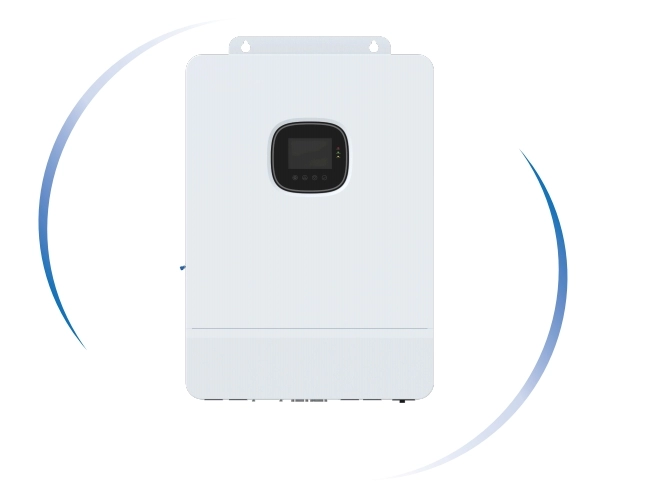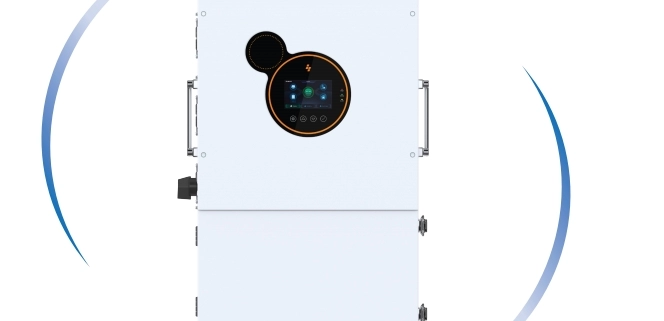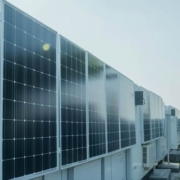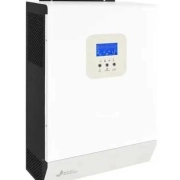How to choose a solar inverters based on the size of your solar system?
A suitable solar inverter is key to installing a solar energy system or upgrading your PV installation. Whether installing a small 5 kW solar off grid system or commissioning a large commercial solar farm, the inverter is the heart of your installation. Choosing a solar inverter that matches the size of your solar array ensures optimal energy collection, extends the system’s life, and improves safety. In this guide, BARANA uses extensive market research and industry expertise to help you choose solar inverters based on the size of your solar system. Explore capacity matching, efficiency considerations, scalability, safety certifications, and cost-performance trade-offs.
Matching solar inverters type to solar energy system size
When sizing a solar inverter, the first thing to decide is whether to use a string inverter, microinverter, or hybrid inverter. String solar inverters are commonly used in residential and commercial facilities up to hundreds of kilowatts. They combine multiple PV strings into one or two larger inverters. For smaller systems (usually less than 10 kW), a single string inverter can efficiently manage the load and simplify installation and maintenance. However, in partially shaded environments or systems with varying roof orientations, micro solar inverters can maximize power generation by optimizing each module independently, making them ideal for systems with 5-15 kW and complex shading patterns.
Central inverters are often preferred for their economies of scale, handling capacities ranging from 100 kW to multiple megawatts for larger utility-scale arrays. Hybrid solar inverters combine PV inverter functionality with battery storage control, making them suitable for off grid or resiliency-focused grid-tied systems in the 5-20 kW range.

Sizing Solar Inverters Based on Solar Array Output
The basic principle of selecting a solar inverter is to match the inverter’s AC power rating to the solar array’s DC capacity. In residential systems, it’s common to size the PV array slightly more extensively than the inverter to capture more energy when sunlight conditions are less favorable. For example, pairing an 8 kW inverter with a 9-10 kW PV array can improve energy collection efficiency because the solar panels rarely run at peak output simultaneously. However, when the ratio exceeds 1.2:1, it can cause severe clipping losses during peak sunshine hours, so experts recommend keeping string inverter ratios between 1.1:1 and 1.3:1.
In commercial and utility-scale installations, configurations often tend to be closer to 1:1 due to tighter performance contracts and stricter interconnection requirements. Metered AC capacity must not exceed grid output limits, so choosing a solar inverter that complies with local utility tariffs and grid codes ensures compliance.

Improving Efficiency at Different Solar System Sizes
Most solar inverters employ MPPT algorithms to optimize energy harvesting in fluctuating ambient conditions. The number of MPPT inputs determines the number of PV strings that can be individually optimized. Small residential inverters typically have one or two MPPT channels, making them ideal for simple rooftop arrays. Medium-sized systems, ranging from 10 kW to 100 kW, benefit from inverters with three or four MPPT inputs, which allow the array to be segmented based on roof orientation or partially shaded areas. Large commercial or industrial inverters often offer up to eight or more MPPT channels, enabling fine-grained control of large arrays.
When selecting an inverter for your specific solar system size, consider the MPPT voltage window and conversion efficiency. Inverters with a wider MPPT range (e.g., 200-800 V DC) offer greater flexibility in string design and help build higher voltage arrays, thereby reducing cable losses. Additionally, MPPT efficiencies of more than 99% ensure minimal energy loss during maximum power point tracking.

Planning for Scalability and Future Expansion
Scalability is another key consideration when selecting a solar inverter, especially for commercial or community solar projects that may expand over time. Modular inverter architectures allow operators to start with a base capacity and gradually add 10 kW or 20 kW inverter modules as demand grows. This avoids expensive over-provisioning upfront and reduces the risk of underutilizing hardware. Such modular inverters typically feature plug-and-play DC input terminals and master-slave communication protocols, which simplify commissioning and minimize downtime during expansion.
Microinverters and power optimizers are inherently scalable for residential applications because each module can operate independently of the others. Homeowners can start with a few panels and add more modules without needing to replace the inverter.
Ensure safety and regulatory approvals.
Regardless of size, all solar inverters must comply with grid interconnection standards, such as IEEE 1547 and UL 1741 certification in the United States, as well as relevant local utility requirements. These regulations mandate anti-islanding protection, reactive power control, and over/undervoltage trip settings. Small residential inverters often have built-in UL certification and fast shutdown functions to ensure firefighter safety and grid stability. Large commercial inverters feature indoor/outdoor NEMA ratings, transformer isolation options, and advanced reactive power support, meeting stringent utility-grade standards. Certifications, such as CE certification for European markets or CSA certification for Canadian markets, further validate the product’s performance and safety. Before installation, confirm that your utility has listed your chosen solar inverter model on its approved equipment list (AEL) and that it meets local regulations.
Best Practices for Getting the Right Solar Inverter
Choosing the right solar inverter for your solar energy system’s size is a multifaceted decision that involves selecting the inverter type, matching capacity, optimizing MPPT, planning for scalability, and conducting compliance checks. From compact string inverters for residential rooftops to modular central inverters for utility-scale projects, each system size requires specific features to maximize energy collection efficiency, ensure safety, and support future growth.





